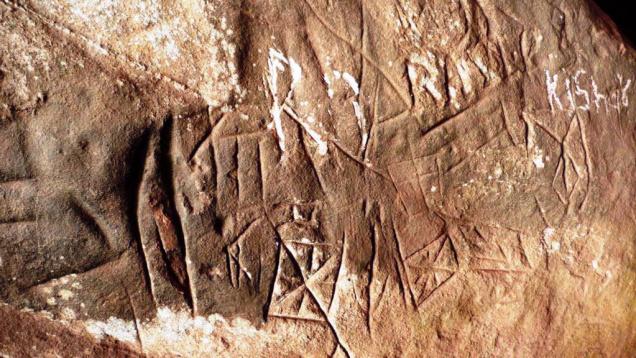 Two pre-historic rock art sites in Wayanad district are facing neglect and ruin.
Two pre-historic rock art sites in Wayanad district are facing neglect and ruin.
The petroglyphs (rock engravings) on the walls of a slanted rock on the Thovarimala hills, near Sulthan Bathery, and a newly discovered art site at Kappikunnu, near Pulpally, both believed to date back to the Neolithic period, are in urgent need of attention.
Though the rock engravings at Edakkal caves had been protected by government agencies, the ones at Thovarimala, just five km from Edakkal, and Kappikunnu are yet to be taken care of by the Department of Archaeology. Miscreants and anti-socials who reportedly frequent the Thovarimala had disfigured some of the precious carvings by wanton etching. More than 50 motifs had been engraved on the rock walls and many of these resemble the rock carvings of Edakkal.
Though the Edakkal cave carvings outdo the Thovari carvings in beauty, the interpretive possibility of the carvings at the latter place is immense, historian M.R. Raghava Varier told The Hindu. The engravings, including geometrical signs, and fertility, arrow, and star symbols, beside the newly found anthropomorphic motif, looks like the prototype of a figure at the Edakkal caves. Some of the graffiti marks closely resemble the Brahmi script. One carving resembles a bird, a specimen of the primitive man’s creative instincts to depict the world around him despite the limitations of his crude tools. Historians and researchers had acknowledged its significance but the place was yet to get any serious attention, Joseph, a villager said.
The cave, in the middle of a vested forest under the South Wayanad Forest Division, also provided visitors a panoramic view of the place. The place could also be a tourism destination, he said. Tourism would also prevent anti-social elements from taking over the place, he added.
This monument is priceless and should be properly protected, Dr. Varier, who had done extensive work on the antiquities of Wayanad, said. The rock engravings at Thovari were similar to those at Edakkal in the style of depiction and different in content. The area around Thovari was rich in megalithic monuments and articles such as burials cists, burial urns, and stone circles. The place had also yielded Neolithic polished stone axes, he said.
These suggested human occupation in the area at least from the new Stone Age.
A few months ago, a Belgium scholar had discovered a rock art site on the precincts of a temple at Kappikunnu, under the South Wayanad Forest Division.
She had found four figures including one of two deer facing one another and a headgear on a huge chunk of rock.
